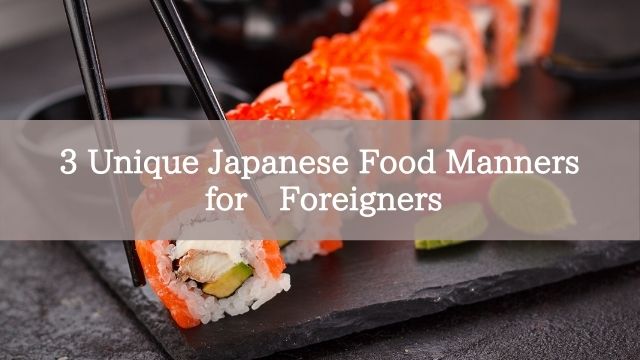There are several different manners that vary from different cultures and Japanese people are no exception. Japanese follow specific manners in our everyday life. If you know it, you can enjoy Japan more!
3 Unique Japanese Food Manners from for Foreigners
Before going to Japan to eat in restaurants or if you are invited to dine in a Japanese household, these are three things you might encounter.
Itadakimasu and Gochisousama
Before digging into your favorite ramen or Japanese meal served to you, Japanese might say, “Itadakimasu!” while putting their hands together like praying then slightly bow as a way to say grace and gratitude from the food served. The word means, “thank you for the food” or “let’s eat!”
After finishing food, they might say “gochisousama”, it means “thank you for the food” as a way to show appreciation to the cook and the life of the food.
If you try it, Japanese will be surprised!
Eat Soba and Udon with Noise
In most Western culture, it is considered bad manners to make noise from eating your bowl of noodles but in a Japanese table, it is common!
By intentionally slurping the noodles while eating is a way to show the chef that we enjoyed the food and at the same time, it is a traditional way to taste, feel and smell the aroma better of your noodles.
Noodles like soba do not have a strong smell, slurping is a better way to tell the fragrance of noodles plus. It tastes better when you do this!
Bring Tableware
When eating a rice bowl, lift the bowl near your mouth to eat using your one hand and the other to hold your chopsticks. Similarly, when you are served with soup, drink it as if in a cup. This may be bad manners to some Asian cultures, but in Japan, it is a proper table manner and also a way to eat cleanly at your table.
Are you familiar with these Japanese manners? What do you think of these table manners above?
If you follow the rule, you definitely can enjoy Japan more! On our site, we will introduce Japanese cultures so please visit here again
Sources:
https://cookingforeigners.org/column/gaikokujinmuke-ryourikyoushitsu-
koushi
https://www.japan-guide.com/e/e2005.html

